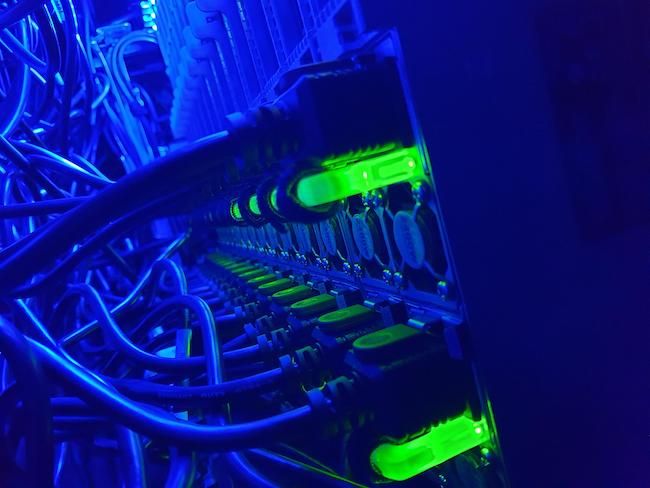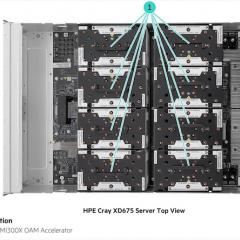
High-performance computer Wiener, (Photo: Jake Carroll, UQ.)
Wiener has become UQ's first petaflop-capable high-performance computer, thanks to first-to-market IT hardware that RCC installed recently.
A petaflop is a unit of computing speed equal to one thousand million million floating-point operations per second.
Testing of the new hardware has produced excellent results as expected, including faster, better performance, and lower latency, which will mean faster time-to-discovery for Wiener-using researchers.
Wiener is designed to expedite the pace of research in a diverse range of imaging-intensive science, generated by UQ’s world-leading microscopy facilities.
The new infrastructure is important to researchers using Wiener in both machine learning and general accelerated computing.
In machine learning and Artificial Intelligence, training sessions will be more than 10 per cent faster than phase one of the system installed in early 2018.
In other accelerated computing codes, where peer-to-peer GPU-sharing is possible, such as imaging processing, the new hardware will allow Wiener to combine its GPUs and memory on a single node, delivering a faster execution and bigger memory footprint jobs, expanding beyond a single GPU, but behaving as if it were one.
RCC received the new hardware early due to discussions with the vendor engineering teams at last year’s Supercomputing Conference (SC18) in Dallas, Texas.
The hardware is the direct-connected switchless SXM2 GPU (graphics processing unit) technology. Distinct from other SXM2 GPU solutions, this technology uses no PCI Express (PCIe) switching between the GPUs and CPUs (core processing units), enabling about 12 per cent better performance compared to other SXM2 socket-based systems.
This new SXM2 switchless GPU layout allows for 300 gigabytes per second transfers between GPUs for shared memory and processes. This is about 10 times the speed that the previous PCIe GPU-to-GPU switched communication allowed. (Read this article if you’d like more information about the hardware.)



